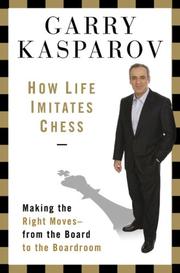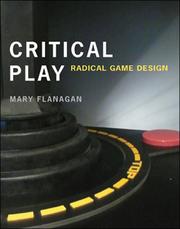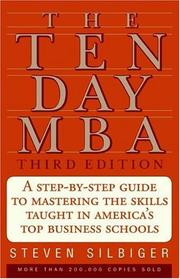How Life Imitates Chess: Making the Right Moves, from the Board to the Boardroom Garry Kasparov - ISBN 1596913878200X - Audible Audiobooks 2007
Motivation
Recommended by metaphaze after 2 questions I asked regarding chess and the link to behavioral finance applied to studied games and the evolution of strategies over time.
Pre-reading model
Draw a schema (using PmGraphViz or another solution) of the situation of the area in the studied domain before having read the book.
Reading
Part I
- Chapter 1 - The Lesson
- Chapter 2 - Strategy
- aligning tactic with strategy
- ~min32 "The virtue of innovation only rarely compensate for the vice of inadequacy"
- Chapter 3 - Strategy and Tactics at Work
- Chapter 4 - Calculation
- very interesting points on the limits of "cold" computation
- Chapter 5 - Talent
- very interesting points on creativity
- and how "cold" calculation can help break the bad habits
- Chapter 6 - Preparation
- priorities
- healthy schedule
- learning from
- older games
- own mistakes
- own way of learning
Part II
- Chapter 7 - MTQ: Material, Time, Quality
- Chapter 8 - Exchanges and Imbalances
- Chapter 9 - Phases of the Game
- Chapter 10 - The Attacker's Advantage
- "failure to innovative is riskier still"
Part III
- Chapter 11 - Question Success
- Chapter 12 - The Inner Game
- Chapter 13 - Man vs. Machine
- Chapter 14 - Intuition
- Chapter 15 - Crisis Point
- Engame
See also
April 20th, 2009
Overall remarks and questions
- eventually to share at MBE10
Synthesis
So in the end, it was about X and was based on Y.
Critics
Point A, B and C are debatable because of e, f and j.
Vocabulary
(:new_vocabulary_start:)
new_word
(:new_vocabulary_end:)
Post-reading model
Draw a schema (using PmGraphViz or another solution) of the situation of the area in the studied domain after having read the book. Link it to the pre-reading model and align the two to help easy comparison.
Categories
Back to the Menu
Other read books linking to the HowLifeImitatesChess page :
Back to the Menu
 Fabien Benetou's PIM
Fabien Benetou's PIM








